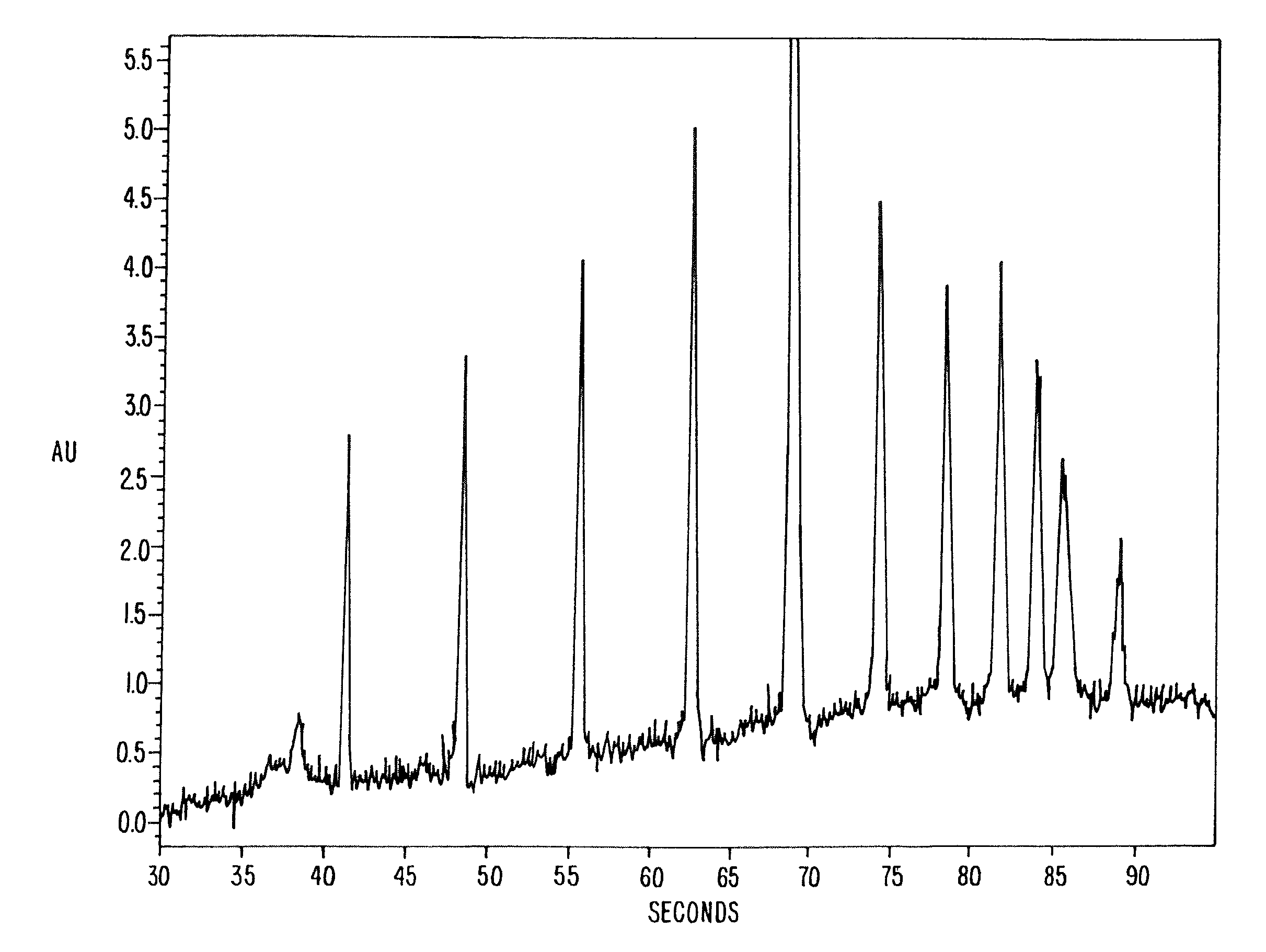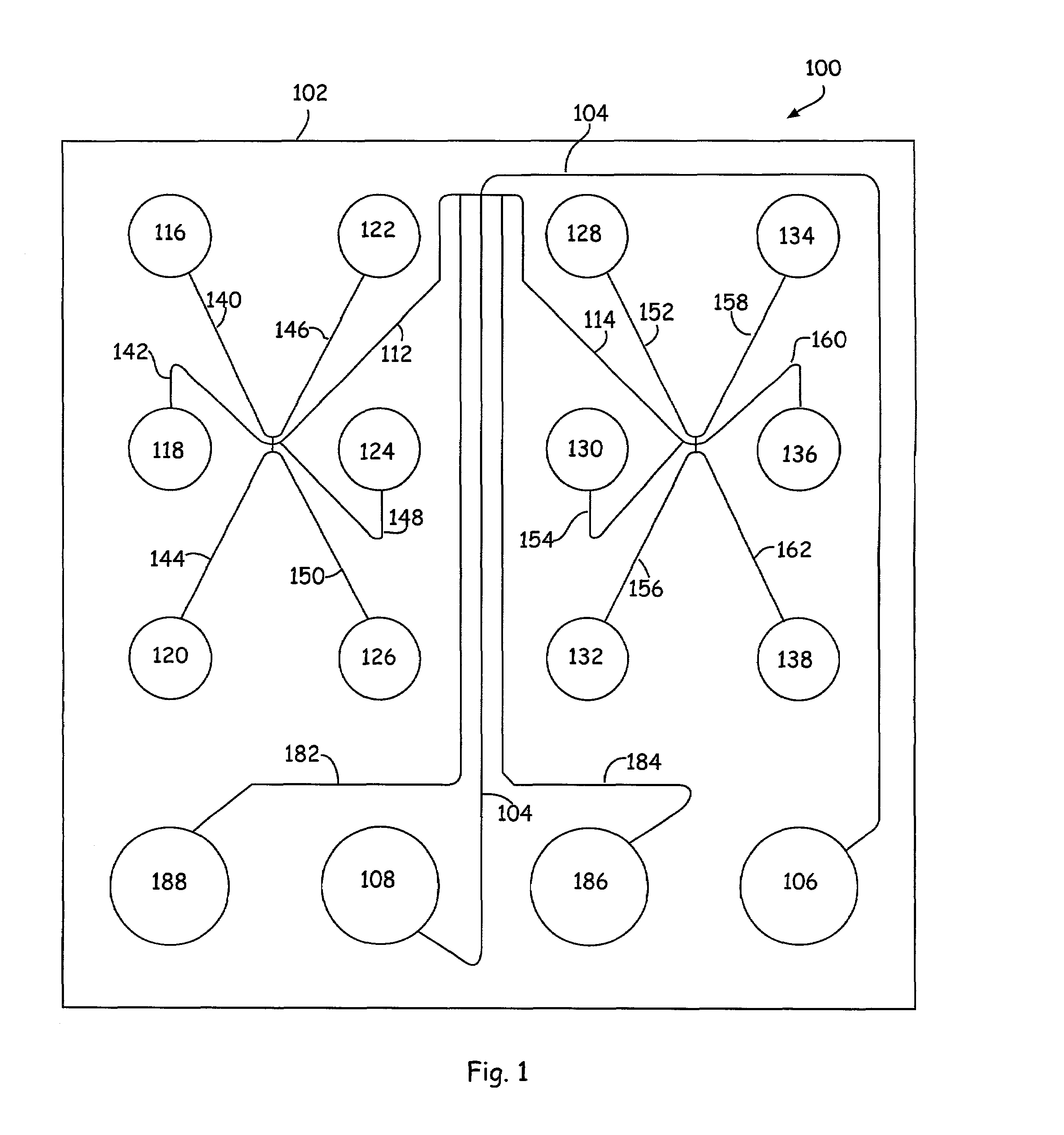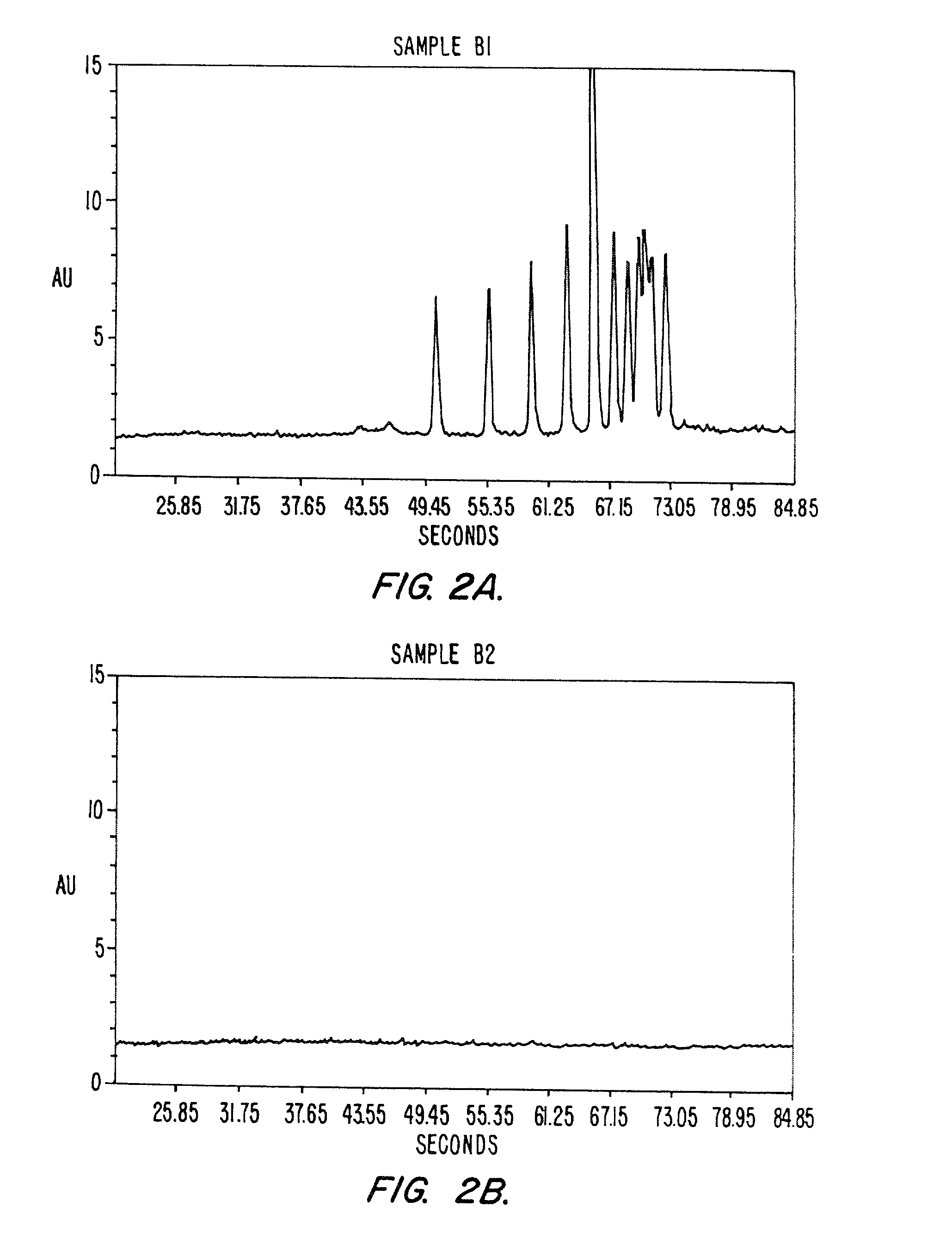Methods and compositions for performing molecular separations
a molecular separation and composition technology, applied in the direction of fluid pressure measurement, liquid/fluent solid measurement, peptide measurement, etc., can solve the problem of not being able to perform electrotrophoretic separation in a free solution
- Summary
- Abstract
- Description
- Claims
- Application Information
AI Technical Summary
Problems solved by technology
Method used
Image
Examples
examples
I. Polymer Synthesis
[0044]Polymer solutions were prepared according to the following protocols:
[0045]A. 2-Methyl-1-propanol Polymerization of Polydimethylacrylamide
[0046]To a 25 ml sidearm flask was added 6 ml of 2-methyl-1-propanol and 3 ml of N,N-dimethylacrylamide. The flask was fitted with a one-hole rubber stopper that had an argon gas line feed through the hole to the bottom of the flask. The side arm of the flask was left open. A steady stream of argon was bubbled through the solution in the flask for 10 minutes. After the 10 minute bubbling period was over three milligrams of 2,2′ Azobisisobutyronitrile was added to the flask. The flask was lowered into a 60° C. water bath and the bubbling of the argon gas continued. After one hour the flask was allowed to cool to ambient temperature. The solution in the flask was now a viscous liquid indicating that polymerization had occurred. Purification of the polymer was achieved by subjecting it to a series of precipitation's and diss...
PUM
| Property | Measurement | Unit |
|---|---|---|
| Fraction | aaaaa | aaaaa |
| Fraction | aaaaa | aaaaa |
| Viscosity | aaaaa | aaaaa |
Abstract
Description
Claims
Application Information
 Login to View More
Login to View More - R&D
- Intellectual Property
- Life Sciences
- Materials
- Tech Scout
- Unparalleled Data Quality
- Higher Quality Content
- 60% Fewer Hallucinations
Browse by: Latest US Patents, China's latest patents, Technical Efficacy Thesaurus, Application Domain, Technology Topic, Popular Technical Reports.
© 2025 PatSnap. All rights reserved.Legal|Privacy policy|Modern Slavery Act Transparency Statement|Sitemap|About US| Contact US: help@patsnap.com



